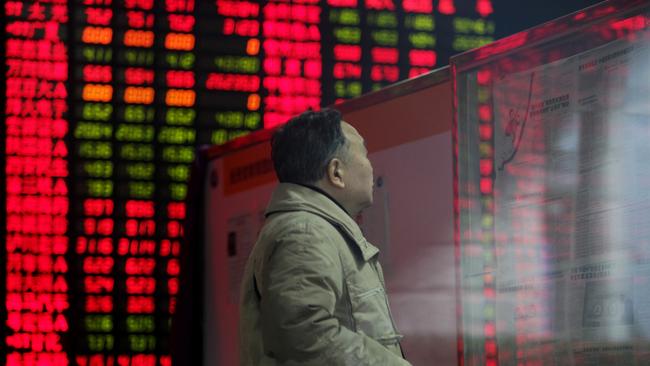How investors can buy the China story through ETFs
Why is money pouring into China’s rather unique sharemarkets, despite such a poor global outlook?

China shares are up around 14 per cent so far this year and on a five-year high, while Wall Street and the ASX 200 are still down.
In many ways global sharemarkets reflect the picture of their own domestic markets, where there is widespread economic malaise and yet some listed sectors are still running hot.
That’s why money is pouring into China, despite a poor global outlook and why an Australian market darling such as Afterpay could raise easily $800m while the national economy is firmly in recession.
China’s surging CSI300 has in common with Afterpay a promise to capture the upside of better days ahead. Yet the Shanghai market is not a sharemarket as we know it.
Ridden with government controls and the constant selection and support of government favourites, it operates along different lines.
Those differences are taken on board by retail investors, who can now access China investments in ways that never existed before.
There is a selection of China-focused ETFs which have enjoyed an upswing in prices in recent weeks, while global funds such as Magellan or Platinum offer a partial emphasis on China investments.
Why the lift?
Why are China’s shares suddenly rising? The answer depends on who you ask. Those with investments on the line in China will talk of improving fundamentals, better than expected economic data and a growing maturity in market regulations. Moreover, fund managers in the area will talk strictly in terms of quantitative factors and will rarely be drawn on factors that ultimately matter materially, such as politics and trade settings.
In reality, the range of factors will include China becoming one of the first nations to emerge from the pandemic and moving to stimulate its infrastructure sector as part of a national recovery program. There will also be the surge in post-pandemic consumption across China and what now looks now the eclipse of Hong Kong’s Hang Seng Index, with the Shanghai markets set to ascend on the international stage.
There is also the move towards increasing self reliance as China champions certain companies in particular industries. The rise inside China of excavator group Sany Heavy Industry, versus the waning share of Caterpillar in China’s construction, is regularly rolled out as a strong example of this trend.
China-focused ETFs
For retail investors willing to take on the risks of direct investment in China, the Magellan Global Equities Fund and the VanEck Vectors China New Economy Fund are two different Exchange Traded Funds listed on the ASX.
The VanEck fund concentrates exclusively on China shares.
Jamie Hannah, deputy head of investment at VanEck in Australia says the “CNEW” fund aims to follow Chinese technology and healthcare companies that offer strong growth prospects.
“Yes, it is a little more volatile than other markets and there are distinct issues in dealing with China but more and more it operates very similarly to any other sharemarket,” he explains.
“The big difference is that retail investors drive the China sharemarket and right now they are going into shares in a big way,” says Hannah. The CNEW fund is up 20 per cent this year to date.
At the Magellan Global Equities Fund (MHG), where fund manager Hamish Douglass doubled the fund’s China exposure from 14 per cent to 25 per cent in March, two of the fund’s top ten stocks are China leaders Alibaba and Tencent.
Separately, Douglass has regularly explained the holdings in companies such as Apple or Starbucks are ultimately ways for the Australian investors to get action in the China market. MHG is still slightly down for the year but is up around 20 per cent since the reweighting to China shares in March.







Against a dreary economic backdrop peppered with second-round regional lockdowns, sharemarkets continue to climb higher. The latest catalyst is China, or to be more specific, China’s unique sharemarket.